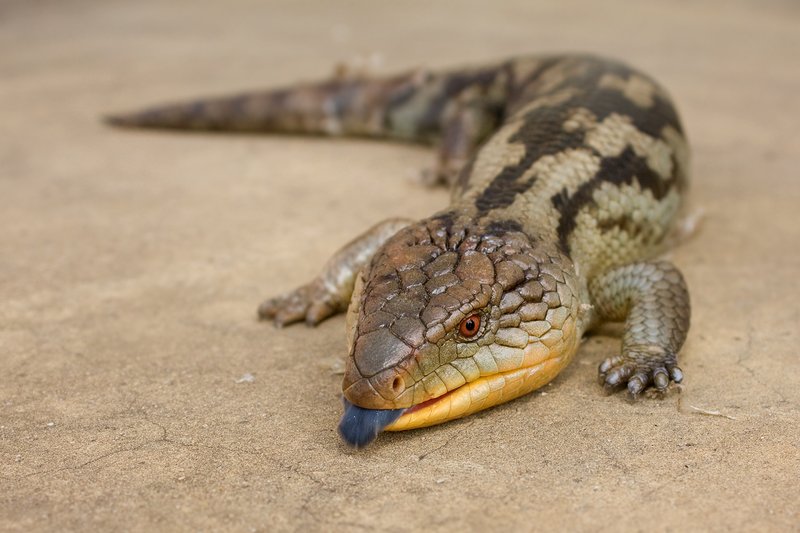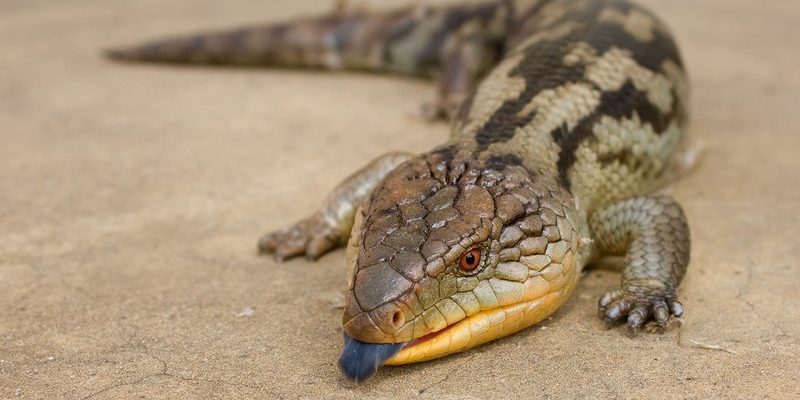
Blue-tongue skinks, known for their—surprise—bright blue tongues, have remarkable traits that help them stay alive and thrive, even when conditions are less than ideal. They’re not just a pretty face; their survival skills are built on a combination of physical features, behavioral strategies, and clever ways to cope with environmental stressors. If you’re curious about how these little guys manage in tough situations, you’re in the right place.
Physical Adaptations for Harsh Climates
One of the first things you notice about blue-tongue skinks is their sturdy bodies. These lizards have evolved to withstand harsh environments, and their physical features play a huge role in that. Their strong, cylindrical bodies help them regulate their body temperatures better than many other reptiles. When it’s hot, they can burrow into the ground or hide under rocks to cool off. Conversely, when it’s chilly, they rely on their body’s insulation to retain heat.
Another interesting feature is their coloration. Most blue-tongue skinks blend into their environment with earthy tones like browns and greens, which helps them avoid predators. This natural camouflage allows them to remain unnoticed among the dried leaves and rocks. Plus, when threatened, they flaunt their vibrant blue tongues in a startling display, often scaring away would-be attackers. It’s like pulling out a colorful flag saying, “You don’t want to mess with me!”
Diet Adaptations
What these lizards eat also contributes to their survival in tough environments. Blue-tongue skinks are omnivores, meaning they eat a variety of foods. From insects and snails to fruits and vegetables, they have a flexible diet that allows them to adapt based on what’s available. In harsher times when food is scarce, this variety means they can still find something to munch on, rather than relying on just one food source.
In addition to being adaptable in their diet, they also have a unique method of foraging. These skinks often scavenge for food and have been known to consume decaying plant matter. It might not sound appealing to us, but in the wild, it can be a lifesaver!
Behavioral Strategies for Survival
So, how do blue-tongue skinks behave in their environments to ensure survival? One of their key strategies is their nocturnal behavior. Many species are most active at night when temperatures drop, making it easier for them to hunt for food and avoid predators. By staying hidden during the hot day hours, they conserve energy and moisture, which is crucial in dry areas.
They also exhibit social behaviors that help them cope with challenges. For example, during mating season, males will display their blue tongues to attract females and establish dominance. However, they often prefer a solitary lifestyle the rest of the time, avoiding competition for space and resources. It’s a smart strategy that allows them to thrive without unnecessary stress.
Water Conservation Techniques
Water is vital for all living things, but it can be tough to come by in some of the environments blue-tongue skinks call home. That’s why they have developed effective water conservation techniques. These lizards can reduce their activity during the hottest parts of the day, allowing them to minimize water loss through evaporation.
Additionally, blue-tongue skinks can absorb moisture through their skin, which is a handy trick when conditions are dry. They often hide in burrows or beneath foliage, where humidity levels might be higher, allowing them to soak up a bit of moisture without directly hunting for water.
Adaptation to Temperature Extremes
Blue-tongue skinks are incredibly adaptable when it comes to temperature. They can tolerate a range of temperatures but have a thermal preference that helps them regulate their body heat effectively. When it’s chilly, they can bask in the sun to warm up, and when it gets too hot, they retreat to cooler, shaded areas. This thermoregulation process is vital for their survival, helping them avoid overheating or losing too much heat.
Interestingly, they’re also known to enter a state called brumation during the colder months. This is similar to hibernation but not quite the same. During brumation, their metabolic rates drop significantly, allowing them to survive on body fat until the temperatures rise again. This ability to slow down and wait it out is crucial in environments where food can be scarce during winter.
Predator Evasion Techniques
Being a small and tasty snack for many predators, blue-tongue skinks need a few tricks up their sleeves. As we’ve mentioned earlier, their blue tongues act as a critical defense mechanism, startling predators. But they also possess a strong, hard body that can resist bites, giving them a better chance during an attack.
When faced with danger, these lizards often play dead. By flipping onto their backs and remaining still, they can confuse predators who might lose interest if they think their potential meal is no longer alive. It’s not just a clever trick; it allows them to escape a situation without putting up much of a fight.
The blue-tongue skink is a remarkable example of how life can adapt to even the harshest environments. Through their physical adaptations, behavioral strategies, and sheer resilience, these lizards prove that survival is all about ingenuity. Whether it’s their ability to withstand temperature extremes, conserve water, or defend against predators, every part of their existence is finely tuned to support life in challenging conditions.
As we marvel at the unique adaptations of the blue-tongue skink, we also learn an important lesson about resilience and adaptability—qualities that are just as crucial for us in our daily challenges. So, next time you spot a blue-tongue skink, take a moment to appreciate the incredible journey it has taken to thrive in a tough world.

